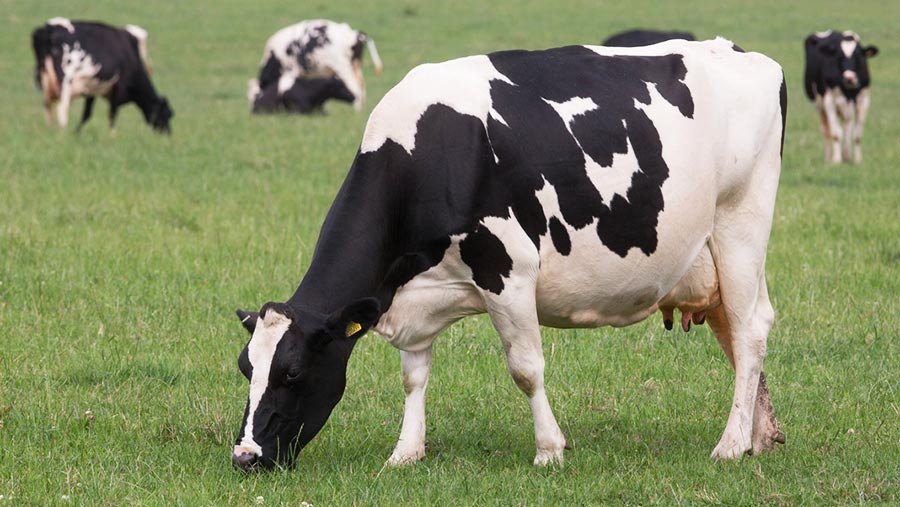Farms save twice ketosis cost when bolusing high risk dry cows
 © Tim Scrivener
© Tim Scrivener Investing in ketosis prevention can “more than pay for itself” in grass-based dairy herds, a study has found.
Bolusing “high risk” dry cows prior to calving saw dairy farms in the Cheshire Plain and Staffordshire region almost double their money on £28 boluses in a vet-led study.
Despite ketosis being more widely associated with housed units, Dave Gilbert of Lambert Leonard and May, who ran the trial, said the health, fertility and production benefits far outweighed the cost of the preventative measure.
Even working on conservative values, Mr Gilbert said a bolus used in a targeted manner would bring around £53 in benefits, making a business £25 better off overall when deducting the bolus cost (see table).
See also: Strict monitoring of freshly calved cows improves transition health
“Even on cows that were randomly bolused the farmer got a small return,” Mr Gilbert told Farmers Weekly. “However, targeting boluses at fat, thin or lame cows in the close-up period farms were effectively doubling their money on cost of the bolus.”
The 550-cow study found that bolused cows:
- Were 5% less likely to be culled or barren
- Reached service four days quicker
- Took one day less to conceive
Cost benefit on 100 “high risk” cows
|
Benefit |
100 High risk cows |
|
Culls @£400/cow |
Seven culls = £2,800 |
|
Fertility medication @£20/treatment |
Five treatments = £100 |
|
Days to pregnancy @£4/day |
Three days = £1,200 |
|
Milk production @ 20p/litre |
60 litres loss = £1,200 |
|
Bolus cost £28 each |
-£2,800 |
|
Cost benefit |
£2,500 |
Mr Gilbert warned that the five low-input/low-output units running tight calving intervals were still demanding high performance from their animals, despite only targeting yields of 5,000 litres a lactation.
He added: “We think of those farms as lower nutritional stress but the study showed that challenges were still there. Ketosis is a limiting factor in high-yielding herds but little work has been done in lower yielding grass-based systems.
“We learned that among high-risk cows that seven fewer cows were culled, which we accounted by costing a fat cow leaving the herd against a heifer entering the unit.
“We have been conservative with our figures as we’ve had £600 cull cows and 30 pence per litre in recent times. What we did was take the price of a cull cow off buying a heifer into the farm, finding that the benefit of reducing culls paid for the bolus on its own.”
